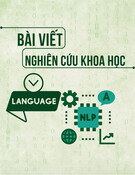
7+(62&,2/,18,67,&62)(1(5(10,1,1
ENGLISH-SPEAKINGSOCIETIES
H7KL0LQK7KDR
(PDLOWKDROWPKRHQ
Received:05/08/2024
Revised:17/02/2025
Accepted:26/02/2025
DOI:10.59266/houjs.2025.539
EVWDFWNamesservenotonlyasmarkersofindividualidentitybutalsoascultural
artifactsthatencapsulatesocietalvalues,historicalcontexts,andlinguisticevolution.This
studyprovidesacomprehensiveanalysisofgenderednamingconventionsinEnglish-speaking
communities, tracing their historical trajectories and examining contemporary trends.
Employing a mixed-methods approach that integrates both quantitative and qualitative
analyses,theresearchinvestigatesnamingpracticesfromtheAnglo-Saxonperiodtomodern
shiftstowardgenderinclusivity.Thendingsrevealthatwhiletraditionalgenderassociations
in naming remain deeply embedded, gender-neutral names are growing alongside the
profoundinuenceofglobalizationandtechnologicaladvancementsonnamingconventions.
By synthesizing insights from etymology, sociolinguistics, and cultural studies, this study
elucidatestheroleofnamesinbothreectingandshapingindividualidentitywithindynamic
WDDQGVDSHV
.HRV gender naming, cultural identity, historical inuences, sociolinguistic, naming
WHQGV
HanoiOpenUniversity
,,QWURGFWLRQ
1DPV DU DQ LQJUDO SDU R
cultural identity, serving as markers of
societal values, historical contexts, and
linguistic evolution. In English-speaking
societies, naming conventions have long
been shaped by a blend of historical,
religious, and socio-political inuences.
These inuences have not only dictated
KLFK QDPV DU FRQVLU DSSURSULD
forspecicgendersbuthavealsoreected
broader culturalnorms andchangesover
time (Reaney & Wilson, 1997; Smith-
Bannister,1997).
Historically, male names such as
WilliamandRobertwereassociatedwith
strength, leadership, and feudal roles,
KLO PDO QDPV OLN (OLDEK DQ
Maryconveyedidealsofpietyandvirtue
(Withycombe, 1977; Smith-Bannister,
1997).TheNormanConquestintroduceda
wealthofnewnamestoEngland,blending

2O (QJOLVK DQ UQFK UDLLRQV R
FUD D QDPLQJ VVP KD QUV LQ
moderncontexts(Reaney,1967;Historic
UK,2024).BytheVictorianera,naming
conventions reected rigid gender roles
and class structures, with names such as
OEU DQ 9LFRULD VPEROLLQJ URDO
andpropriety(Redmonds,2004).
Modern trends in English naming
demonstrate a shift towards inclusivity
and individualism. The rise of gender-
QUDO QDPVVFK DV7DORU DQ-RUDQ
illustrates the inuence of societal
movementschallengingtraditionalgender
binaries (ONS,2024).At thesametime,
K UVUJQF R UDLLRQDO QDPV OLN
Oliver and Charlotte reects a renewed
DSSUFLDLRQ RU FOUDO KULDJ DQ
stability (Hanks, Coates, & McClure,
2016). Names also play a role in “doing
gender,”reinforcingsocietalexpectations
through linguistic associations (PMC,
2024).
7KLV V ELOV SRQ LVLQJ
UVDUFK R DQDO SDUQV LQ JQU
QDPLQJ SUDFLFV LQ (QJOLVKVSDNLQJ
societies. Drawing on historical and
contemporary sources, it explores how
QDPV QFLRQ DV FOUDO DULDFV KD
encodesocietalvalues,adapttoevolving
norms, and inuence individual identity.
Bysynthesizinginsightsfrometymology,
sociology, and linguistics, this research
aims to provide a deeper understanding
ofthecomplexinterplaybetweennames,
culture,andgender.
,,/LWHUDWUHUHYLH
7K V R JQU QDPLQJ
SUDFLFV LQ (QJOLVKVSDNLQJ VRFLLV
provides insight into how cultural,
historical, and social norms shape
linguistic patterns. This section reviews
LVLQJ UVDUFK RQ K KLVRULFDO
evolution, sociolinguistic implications,
DQ FRQPSRUDU UQV LQ (QJOLVK
names, with a focus on their gendered
dimensions.
2.1. Historical development of
QDPHV
(QJOLVK QDPLQJ UDLLRQV D
EDFN R K QJOR6DRQ DQ 1RUPDQ
periods, when names were inuenced
E 2O (QJOLVK DQ UQFK OLQJLVLF
structures (Reaney & Wilson, 1997;
Historic UK, 2024). Male names like
William and Richard often symbolized
leadership and feudal authority, while
femalenamessuchasAliceandMargaret
embodied domestic virtues and religious
ideals(Withycombe,1977).TheNorman
Conquest signicantly reshaped naming
conventions by introducing names with
LatinandFrenchorigins,manyofwhich
remainpopulartoday(Reaney,1967).
7K9LFRULDQUDPDUNDFULLFDO
juncture,asnameslikeAlbertandVictoria
EFDP PEOPDLF R K SULRV ULJL
JQU UROV DQ KLUDUFKLFDO VRFLDO
structures(Redmonds,2004).Thisperiod
alsosawapreferenceforbiblicalnames,
reecting the profound inuence of
Christianity on English society (Smith-
Bannister,1997).
2.2.Sociolinguisticimplicationsof
QDPHV
1DPLQJ SUDFLFV DU QR PUO
OLQJLVLF SKQRPQD K DOVR QFR
societal norms and expectations.
Names contribute to “doing gender”
E ULQRUFLQJ UROV DQ UDLV P
appropriate for men and women (PMC,
2024). Male names are often associated
withattributeslikestrengthandauthority,
KLO PDO QDPV PSKDVL ED
and grace (Hanks, Coates, & McClure,

2016).Additionally,namescaninuence
perceptions of social class and success,
LPSDFLQJRSSRUQLLVLQ FDLRQDQ
employment(ONS,2024).
2.3. Contemporary trends and
HQHQHWDOLW
Modern naming practices reect a
blend of tradition and innovation. While
traditional names such as Oliver and
Charlotteremainprevalent,thereisagrowing
SUUQF RU JQUQUDO QDPV OLN
Taylor and Jordan, driven bysocietal shifts
towards inclusivity (Cottle, 1967; ONS,
2024). This trend highlights the dynamic
natureofnamingconventionsastheyadapt
tochangingculturalandsociallandscapes.
LUDU QUVFRUV K
POLDF QDU R JQU QDPLQJ
conventions, shaped by historical
contexts, sociolinguistic patterns, and
evolvingculturalnorms.Whiletraditional
names continue to dominate, the rise of
gender-neutralanduniquenamesreects
broader societal shifts toward inclusivity
and individuality. This study builds on
KVLQVLJKVRSORUKSDUQVDQ
LPSOLFDLRQVRJQUQDPLQJSUDFLFV
inEnglish-speakingsocieties.
,,,0HWRGRORJ
7KLVVDRSVDPLPKRV
approach, combining qualitative and
quantitative techniques to investigate
JQU QDPLQJ SUDFLFV LQ (QJOLVK
speaking societies. The methodology
LV VUFU LQR KU SKDVV DD
collection,dataanalysis,andcomparative
analysis, ensuring a comprehensive
SORUDLRQRKLVRULFDODQFRQPSRUDU
namingconventions.
DWDFROOHFWLRQ
DD RU KLV V DV VRUF
from historical records, census data,and
QDPUJLVULVVSDQQLQJKQJOR6DRQ
period to the modern era. These sources
include authoritative texts such as KH
Oxford Dictionary of English Christian
Names (Withycombe, 1977) and
LWLRQDR(QLVKQDPHV5DQ
& Wilson, 1997), as well as modern
databases like the Oce for National
Statistics (ONS). The dataset comprises
a representative sample of male,female,
DQ JQUQUDO QDPV DFURVVLVLQF
historicalperiods,withafocusonnotable
FOUDO VKLV VFK DV K 1RUPDQ
Conquest,theVictorianera,andthe21st-
centuryriseofinclusivity.
DWDDQDOVLV
7K FROOF QDPV U
categorized by gender, historical period,
and cultural signicance. Quantitative
FKQLTV U PSOR R PDVU
QDP UTQF DQ LQL UQV LQ
name usage over time. For example,
VDLVLFDO DQDOVV KLJKOLJK VKLV
fromtraditionalmalenameslikeWilliam
R PRUQ JQUQUDO QDPV VFK DV
Taylor. Qualitative methods, including
thematic analysis, were used to interpret
K FOUDO DQVRFLROLQJLVLFPDQLQJV
embedded inthe names,linking themto
societal values, religious inuences, and
globalintegration.
3.3.Comparativeanalysis
To contextualize ndings, this
V FRPSDU QDPLQJ SUDFLFV DFURVV
historical periods. Patterns in traditional
gender-specic names were contrasted
with emerging trends, such as the rise
of gender-neutral and culturally diverse
names.Thisphasealsoexaminedexternal
factors inuencing naming conventions,
including technological advancements,
globalization, and changing societal
attitudestowardgenderidentity.

(WKLFDOFRQVLHDWLRQV
OODDDVVRUFURPSEOLFO
available historical and governmental
records, ensuring no breach of privacy
or ethical concerns. The analysis was
conducted objectively, focusing on
QUVDQLQJ QDPLQJ SUDFLFV UDKU
thandrawingnormativeconclusions.
,9)LQGLQJVDQGGLVFVVLRQ
3DWWHQVLQHQHHQDPHV
GenderednamingpracticesinEnglish-
speaking societies reveal distinct patterns,
RQ L R FOUDO QRUPV DQ KLVRULFDO
contexts.Malenamesfrequentlyemphasize
attributeslikestrengthandleadership,while
female names tend to reect qualities of
beauty and grace. This section presents
DQ DQDOVLV R QDP UTQF DD DQ
associatedculturalconnotations.
Table1:Top5namesbygenderinEngland(1800-2020)
HDUUDQJH 0DOHQDPHV )UHTHQF
)HPDOHQDPHV )UHTHQF
William,James,John,Thomas,Henry 42% Elizabeth,Mary,Sarah,Ann,Jane 45%
William,George,Charles,John,Edward 40% Mary,Elizabeth,Alice,Emma,Florence 43%
George,Charles,Henry,Robert,Frank 38% Margaret,Rose,Alice,Dorothy,Helen 41%
David,Michael,John,Christopher,James 36% Susan,Linda,Karen,Patricia,Deborah 38%
Liam,Noah,Oliver,Ethan,William 35% Olivia,Emma,Ava,Sophia,Isabella 40%
DDDQDOVLVVKRVKDUDLLRQDO
male names like William and John
dominated in earlier centuries, reecting
patriarchal ideals and biblical inuences
.Female nameslike Elizabeth andMary
U VLPLODUO URR LQ UOLJLRV DQ
cultural symbolism, often signifying
purity and virtue. By the 20th Century,
diversication in naming practices
introduced names such as Margaret
and Rose, with a strong emphasis on
individuality.
Inrecentdecades,unisexnamesand
more exible conventions have gained
popularity.Forexample,theemergenceof
7DORUDQ-RUDQDVJQUQUDOQDPV
represents a shift towards inclusivity.
However,thedatastillshowapreference
for traditionally gendered names, with
FODU LVLQFLRQV EQ PDOV DQ
femalesinpopularchoices.
7K UQVLOOVUDERK FRQLQL
andchange,reectingtheinterplaybetween
traditionandmodernsocietalvalues.
LVWRLFDO DQ FOWDO
inuences
The evolution of English names is
SO LQULQ LK KLVRULFDO DQ
cultural events that have shaped English
society. FromtheAnglo-Saxonperiodto
themodernera,namingconventionshave
reected societal hierarchies, religious
beliefs, and cultural integration. This
VFLRQ DQDOV KR KLVRULFDO DQ
culturalfactorshaveinuencedgendered
namingpractices.
4.2.1. Anglo-Saxon and Norman
SHLRGV
During the Anglo-Saxon period,
QDPVRQKDPDQLQJVLRUDLVOLN
strength or protection, such as KOU
(“noble counsel”)for malesandEadgifu
(“gift of wealth”) for females. With the
Norman Conquest in 1066, French and
Latinnames,suchasWilliam,Robert,and
Alice,begantodominate,replacingmany
UDLLRQDO QJOR6DRQ QDPV 5DQ
&Wilson,1997;HistoricUK,2024).This

shiftreectedtheculturalassimilationand
feudalhierarchyimposedbytheNormans.
9LWRLDQHD
7K 9LFRULDQ SULR PDUN D
UVUJQF R QDPV L R URDO DQ
biblical signicance. Male names like
OEU DQ (DU VPEROL VUQJK
andnobility,whilefemalenamessuchas
Victoria andElizabeth reected idealsof
purityanddomesticity(Redmonds,2004).
Table2:Thepopularityofcertainnamesduringthisperiod
1DPH HQGHU Culturalinuence 0HDQLQJ
DVVRFLDWLRQ
)UHTHQF
Notablegures
OEU Male Monarchy,Victorianvalues Nobility,leadership 8% PrinceAlbert(ConsortofQueen
Victoria)
(DU Male Monarchy,tradition Protector,wealth 9% KingEdwardVII
9LFRULD PDO Monarchy,Christianvalues Victory,royalvirtue 7% 4Q9LFRULD
(OLDEK PDO Christianity,tradition OathofGod,purity 10% QueenElizabeth(historicaluse)
UKU Male Literature,chivalricvalues Noble,kingly 5% KingArthur(symbolic)
Mary PDO Christianity,biblicalgures MotherofJesus,grace 12% Commonbiblicalreference
Charles Male Monarchy,leadership Freeman,strength 6% CharlesDickens(author)
OLF PDO Literature,innocence Noble,truth 4% “AliceinWonderland”byLewis
Carroll
George Male Monarchy,militaryvalor Farmer,earth-worker 8% KingGeorgeIV
(PPD PDO Tradition,simplicity Whole,universal 5% CommonVictorianname
0RGHQSHLRG
7KPRUQSULRLQ(QJOLVKQDPLQJ
practices,encompassingthe20thand21st
centuriesreectssignicantsocietalshifts
inuencedbyindividualism,globalization,
and movements toward gender equality.
7KLVUDLVPDUNEKLQUSODEQ
the revival of traditional names and the
emergence of innovative, gender-neutral,
andculturallydiversenamingconventions.
5HLDRWDGLWLRQDQDPHV
Traditional names such as Oliver,
Charlotte, and Henry have regained
popularity during the modern period.
This trend often reects a desire to
UFRQQF LK FOUDO KULDJ DQ
timeless values, especially during
periods of societal uncertainty. For
example, Oliver, consistently ranked
DPRQJ K RS ERV QDPV LQ K
UK since the early 2000s, evokes
VLPSOLFL DQ KLVRULFDO UVRQDQF
(ONS,2024).Similarly,Charlotte,with
URDO FRQQRDLRQV OLQN R 3ULQFVV
Charlotte, has surged in popularity,
ULQRUFLQJUDLLRQDODVVRFLDLRQVLK
eleganceandstability.
Table3:RevivaloftraditionalnamesintheUK(2000-2020)
1DPH 5DQNLQ 5DQNLQ Culturalsignicance
Oliver Simplicity,historicalresonance
Charlotte Royalassociation,Victorianera
Henry Nobility,medievalheritage
4.2.3.2. Emergence of gender-
QHWDQDPHV
7KPRUQUDKDVVQDUDPDLF
rise in the use of gender-neutral names,
reecting shifting societal attitudes
toward inclusivity and non-binary
identities.NameslikeTaylor,Jordan,and
Riley have become increasingly popular,
DSSDOLQJ R SDUQV VNLQJ QDPV KD
transcend traditionalgenderassociations.



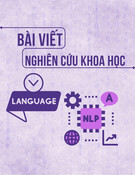



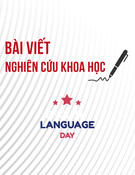




![Đề cương môn Tiếng Anh 1 [Chuẩn Nhất/Mới Nhất]](https://cdn.tailieu.vn/images/document/thumbnail/2025/20251130/cubabep141@gmail.com/135x160/51711764555685.jpg)







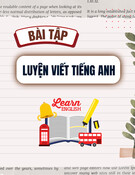
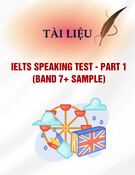

![Mẫu thư Tiếng Anh: Tài liệu [Mô tả chi tiết hơn về loại tài liệu hoặc mục đích sử dụng]](https://cdn.tailieu.vn/images/document/thumbnail/2025/20250814/vinhsannguyenphuc@gmail.com/135x160/71321755225259.jpg)
